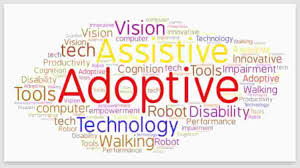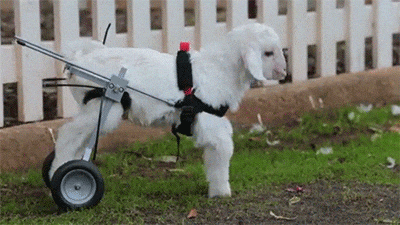How to Fix Discord Error: 'Installation Has Failed'

We are using assistive technology in our day to day activities from low tech devices like Pencil grip, a toothbrush to high tech devices like computer, tablets, robots, etc. The decision between high technology and low technology choices relies on the person and his skills. Assistive Technology helps individuals to be more independent by simplifying their day to day activities, whatever their disability.
Assistive Technology contains items or tools or devices that may be utilized by both disabled and non-disabled person for performing their day to day tasks. So, Assistive technology is not just for people with disabilities. However, the main focus of AT is on people who can not usually do their task normally by themselves. According to World Health Organization, Assistive Technology is defined as "Any device or system that allows individuals to perform tasks they would otherwise be unable to do or increases the ease and safety with which tasks can be performed"
Just remember it simply as Assist = Help.
Example of Assistive Tools/Devices
| Examples |
| Smartphone |
| Computer |
| Contact Lens |
| Eyeglasses |
| Hearing Aids |
| Microphone |
| WheelChair |
| Speaker |

Fig: Thank you Assistive Technology for your supports ![]()
The term adaptive technology and assistive technology seems similar and are interchangeably used. In reality, both kinds of technology differ significantly.
Adaptive Technology is a type of Assistive Technology. It is dedicated only to allow disabled people to operate more fully. A non-disabled individual would rarely use it and specially designed for disabled people. Just remember it simply as Adopt = Change.
Example of Adaptive tools/devices are:
| Examples |
| Special Telephone devices for the deaf. |
| Artificial Legs and Hands |
| Braille |
| Hand Controlled Car |
| Gene Therapy |
| Handheld Amplifiers |
| Cochlear implants |
| Lasik Eye Treatment |
| Screen reader software |

Some devices are purely assistive but many of them are both assistive as well as adoptive. Actually Tablet (screen touch devices) are assistive devices. It is not designed for adoptive purposes but is used as both adaptive and assistive technology.
Actually adaptive technology is a subset of assistive technology. So we can say all adaptive technology are also assistive technology but not all assistive technology is adaptive technology. Surfaces we speak assistive technology as adaptive technology.
Adaptive and Assistive Technology has helped millions of individuals achieve independence and jobs.
People with disabilities often have trouble performing daily living activities and they have been helped by adaptive and assistive technology. Assistive and adoptive improve the capacity of a disabled person to engage in life's major activities and help to perform their tasks that otherwise would be hard or impossible for a person to perform himself/herself. Assistive Technology can be software or hardware and has many variations of devices from simple low tech devices like pen grips, a magnifying glass to high tech devices like computer systems, robots, etc. So, all the things that we are using in our daily life are some kinds of Assistive and adoptive Technology.
- It is easily available in our daily activities. So, used as daily living solutions.
- To set it up and use it you do not need the help of others.
Example:
- Handheld Magnifier to produce a magnified image of an object.
- Pencil grip for a student with trouble grasping it.
- bed-sticks, onslip bathmats, doorbells, a walking stick for elderly and physically disabled people, etc.
- Depending on availability and individual conditions, assessments may be needed.
Examples:
- video magnifier, OCR reading machine.
- Calculator and Tape Recorder.
- Shower chairs
3)Specialized Assistive Technology - Level 3
- Often changes to meet the participant's demands.
- Assessment/help of the people is required.
- Example: Scooter, desktop electronic magnification, pressure mattresses, bath lifts, etc.
4)Complex Assistive Technology - Level 4
- It is Customized AT specially made or configured uniquely based on person to person.
- Assessment is needed.
- Example: cochlear implant speech processors, electronic voice/voice prostheses for the deaf, etc.

1)Wheelchairs: A wheelchair is a chair used for walking when a person is having difficulty moving from one place to another.
2)Transfer devices: It is used for carrying handicap people from one place to destination within a short distance.
3)Prosthetic Limbs: They are artificial limbs. There are general 4 types of prosthetic/Prosthesis limbs:
- Transtibial Prosthesis: It replaces amputated below the knee.
- Transfemoral Prosthesis: It replaces leg amputated above the knee.
- Transradial Prosthesis: It replaces an arm amputated below the elbow.
- Transhumeral Prosthesis: It replaces an arm, amputated above the elbow.
4)Exoskeleton: It is an external skeleton used by the people to support and protects their body.
5)Walker: Walker is a tool that needs support to balance their body while walking and mostly used by a person having age-related physical restrictions.

Those who have low vision or no vision are mostly using this type of device. With the use of a variety of tools, people with severe visual impairments are getting their life back as equivalent to normal beings. Some of the visual impairment that we have seen in our daily basis are screen readers, braille, eyeglasses, contact lenses, magnifier, GPS-based navigation assistance devices, white cane, voice recorders, braille chess, tactile keyboards, etc.

Nowadays assistive technology is aggressively used in the classroom mainly to aids students having learning disabilities. This difficulty may include physical impairment, cognitive problems, etc. The following are the most popular technology used to assist disabilities. They can do as good as normal people and only lacking is assistive technology in most of the country.
Some of the assistive technology used in the classroom are listed below:
Text-to-speech assistive Tools: The software for Text to Speech was designed to assist children with difficulty reading traditional printed versions, which is very helpful for visibility disable children in a classroom for knowing what is in the text.
Phonetic Spelling Software : Technology for phonetary spelling was designed to translate student typing into the word they want to write automatically.
Voiceover: Some OSs will identify the objects when the user selects or moves the cursor over them which is very helpful for disable people.
Math Simulations: Mathematical simulations can allow dyscalculia students to view mathematical issues and concepts in a more interactive way.
Screen Readers: Such learning opportunities can be used by visually impaired and blind students to read and understand their homework assignments more effectively.
Adaptive Seating: These tools can help students in wheelchairs position themselves better and focus more on their learning at school.
Optical character recognition (OCR): It helps to read aloud text from pictures that help disabilities children in a classroom for working with images.
Some of the best assistive technology application that can be used in the classroom are listed below
1)Bookshare
2)Read&Write
3)Read2Go
4) Scan and Read Pro
5)seeing AI
6)Universal Reader Plus and many more.
It is someone who helps you in using assistive technology. They can be health instructors, psychologists, speech pathologists, engineers or anyone who does an assessment.
- It is a powerful tool for improving and enhancing independence and improving the participation of individuals.
- It allows individual children to move, communicate better, see and listen and participate more competently in learning tasks and activities.
- It encourages access to and enjoyment of children's rights and disabilities.